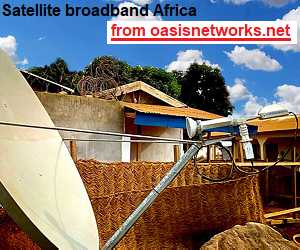
In satellite TV systems, LNB (Low Noise Block Converter) is one of the key components, which is to receive weak signals transmitted from satellites and convert them into low-frequency signals that satellite receivers can process. Choosing a suitable LNB can significantly improve the quality of signal reception. This article will explain in detail how to choose a suitable LNB for your satellite antenna.

1. Basic functions of LNB
LNB (Low Noise Block downconverter) is a low noise downconverter, which has three core functions:
Receive satellite signals (usually C-band or Ku-band)
Reduce signal noise (“low noise” part)
Convert high-frequency signals to low-frequency signals suitable for coaxial cable transmission (“downconverter” part)
2. Key factors for selecting LNB
2.1 Satellite signal frequency band
C-band LNB (3.7-4.2GHz): usually used for large parabolic antennas (above 1.8 meters), suitable for receiving traditional satellite TV signals
Ku-band LNB (10.7-12.75GHz): used for small and medium-sized antennas (0.6-1.2 meters), modern satellite TV mainly uses this frequency band
2.2 LNB types
Single output LNB: the most basic model, can only receive one polarization signal at a time
Dual output LNB: can receive horizontal and vertical polarization signals at the same time
Quad LNB: four independent outputs, suitable for multi-room installation
Octo LNB: eight independent outputs, ideal for large installations
Universal LNB: automatically switches between high and low frequency bands
Single LO/Dual LO LNB: choose according to reception needs
2.3. Local Oscillator Frequency
Must match the satellite signal you receive:
Universal Ku-band LNB: 9.75GHz/10.6GHz
C-band LNB: usually 5.15GHz
2.4 Feed Type

Standard Feed: Suitable for most parabolic antennas
Offset Feed: Suitable for offset feed antennas
3. Installation precautions
Waterproof treatment: Make sure the LNB connection is well sealed
Precise alignment: The polarization angle and focal length of the LNB must be accurately adjusted
Wire quality: Use high-quality coaxial cable to reduce signal loss
Lightning protection: Install lightning protection devices in areas prone to lightning





